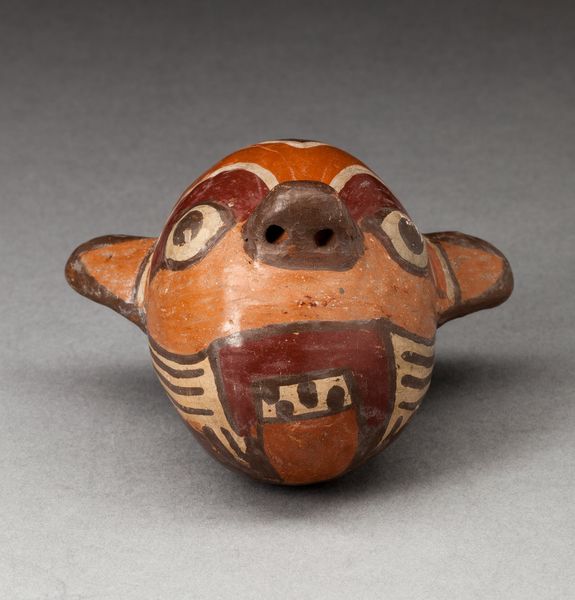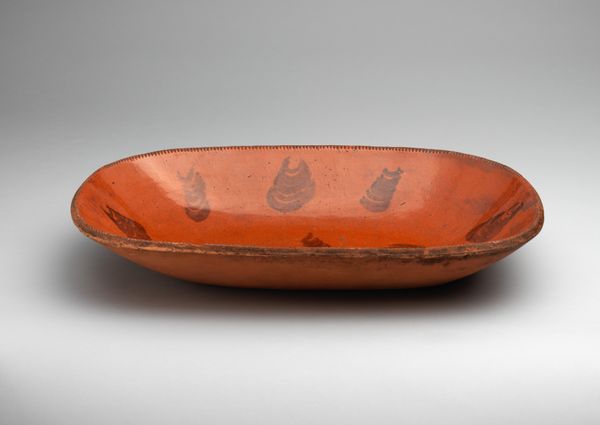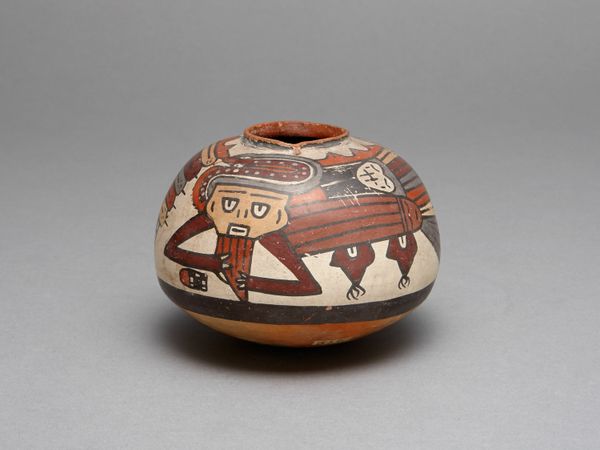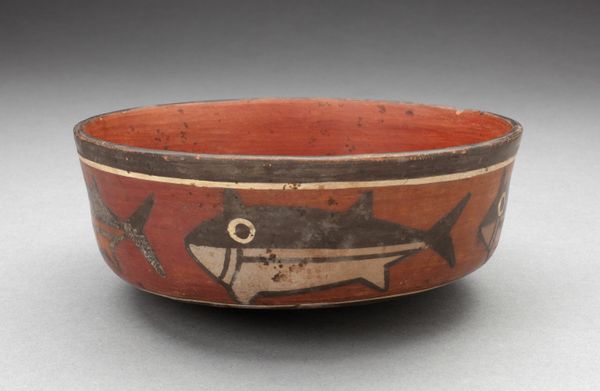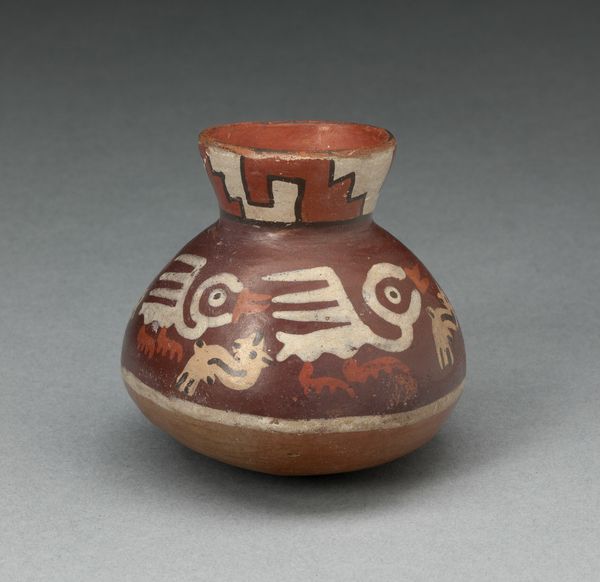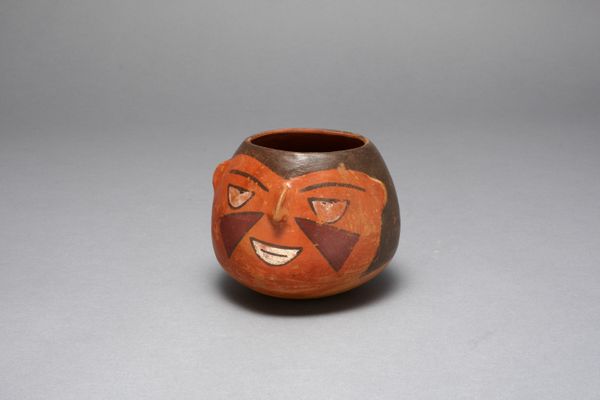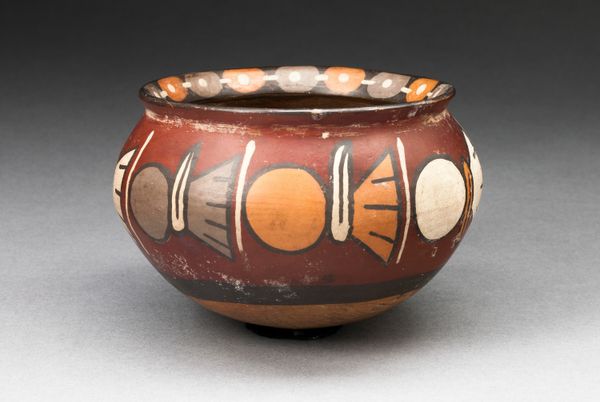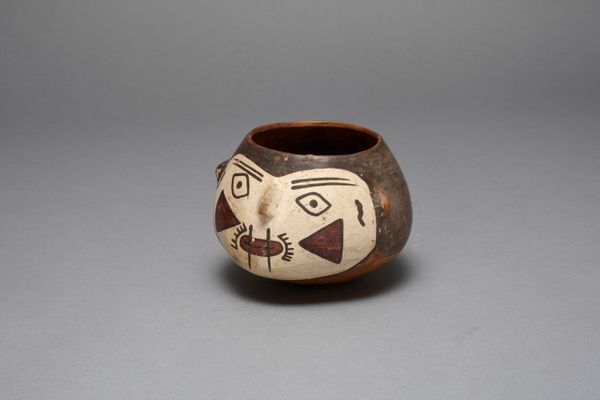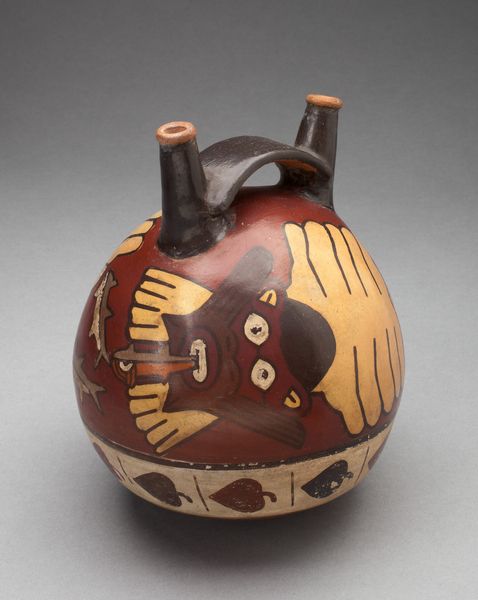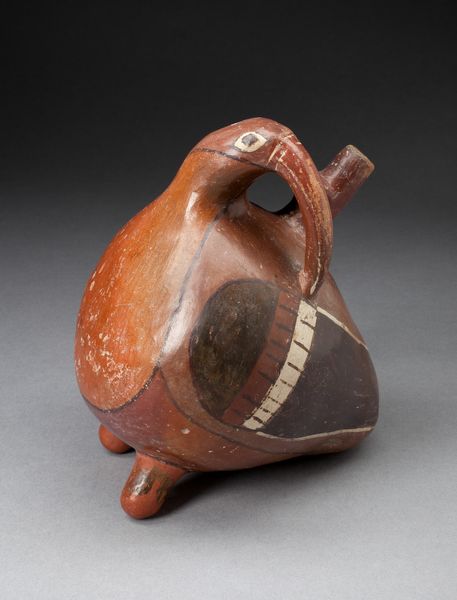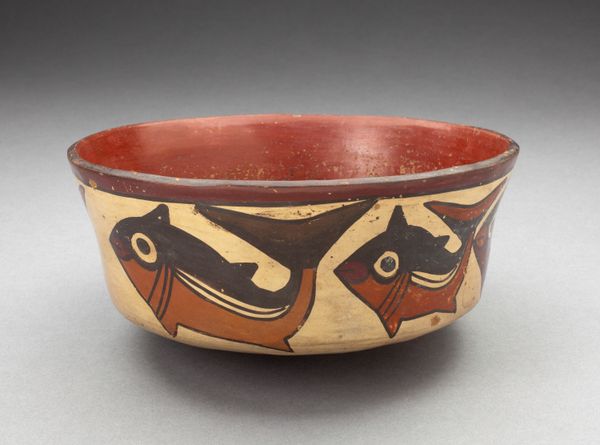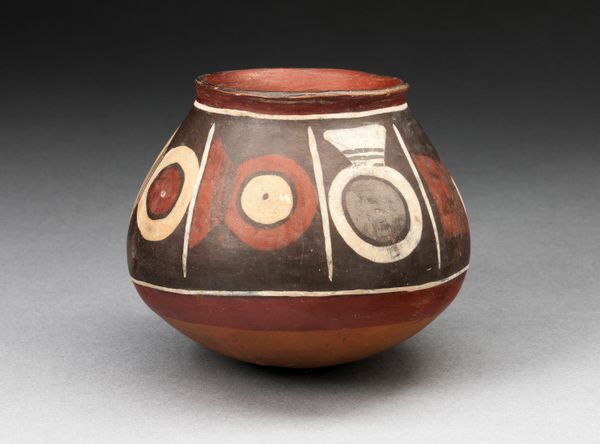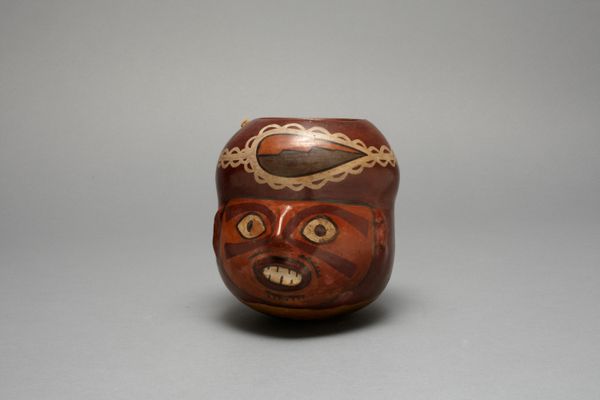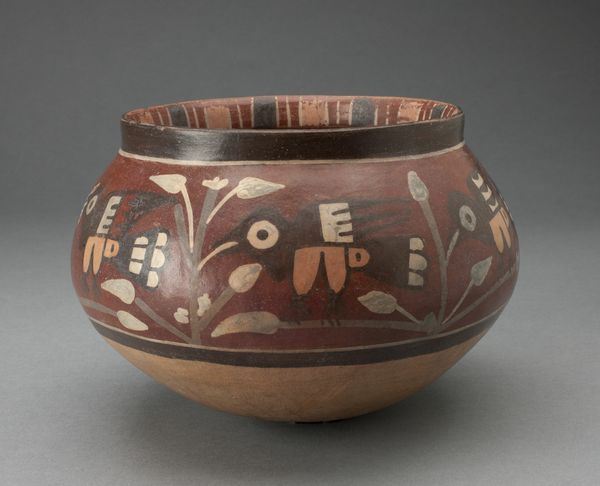
Small Inset Side Bowl Depicting a Pair of Lizards in the Interior c. 180 - 500
0:00
0:00
ceramic, earthenware
#
ceramic
#
figuration
#
earthenware
#
stoneware
#
ceramic
#
indigenous-americas
Dimensions: 5.6 × 12.4 cm (2 3/16 × 4 7/8 in.)
Copyright: Public Domain
Curator: Look at this remarkable piece. It’s a Nazca bowl, dating roughly from 180 to 500 CE. The title gives it away: “Small Inset Side Bowl Depicting a Pair of Lizards in the Interior.” Editor: It has an eerie simplicity. That dark earthenware clay contrasting with the painted scene inside… it feels raw, immediate. The shape, too, isn't perfectly round, almost as if it’s meant to be held in the hand, close to the body. Curator: Absolutely. These bowls weren't mere decorations; they served critical functions within Nazca society. Evidence suggests they were primarily used in ritualistic practices and burial ceremonies, so the narrative depiction becomes key to unlocking cultural understandings of the Nazca civilization. Editor: You know, when I think about that production, I see the maker, carefully pinching the clay, smoothing it, and applying the slip decoration with mineral pigments… It brings me back to considering indigenous labor practice: a slow, manual engagement shaping not just the object but the very world. Curator: It’s the materiality linking functionality and ritual purpose. We believe vessels of this nature functioned as both offerings and receptacles, imbued with spiritual potency by virtue of these elaborate artistic additions, as a method to transcend the physical to evoke spiritual dialogue with higher presences. The prominent position that this type of artifact played should not be discarded, even as something as simple as food vessel! Editor: Consider how the clay itself becomes a form of archive. This simple bowl offers invaluable knowledge of the natural pigments the Nazca peoples had accessible to them through extraction and application as part of their landscape, climate, and cosmology. Curator: Exactly. And let's remember where it resides today—within the climate-controlled galleries of The Art Institute of Chicago, framed by spotlights. This drastically changes its role and presence in contemporary society, in a way divorcing its social reality from the past by establishing a sense of importance or rarity that changes our understanding of it. Editor: The placement in a modern collection emphasizes the visual, maybe obscuring the lived experience inherent in such pieces. But at the same time, perhaps through careful curatorial display, it ignites a certain wonder, a desire to reconstruct how meaning circulated within the community surrounding it, which would mean engaging with material, culture, and use. Curator: Yes, ultimately, understanding artifacts such as this Nazca bowl involves interpreting their intertwined history within and without museums—how their legacy adapts through changing perceptions, meanings, and intentions across vastly disparate social environments and time. Editor: Absolutely! An interesting discussion around clay, image, history, and narrative. I hope that, in this case, listeners take with them just how important materials are when contemplating visual creation!
Comments
No comments
Be the first to comment and join the conversation on the ultimate creative platform.
